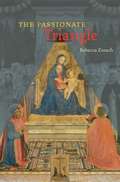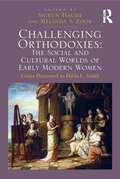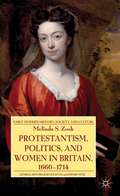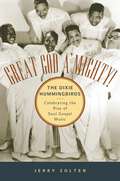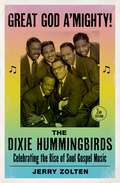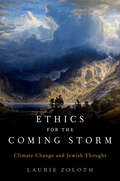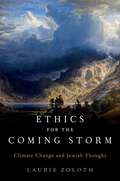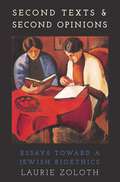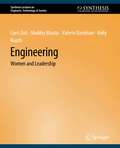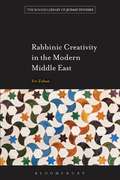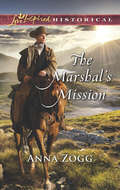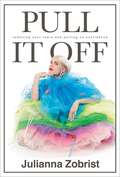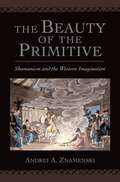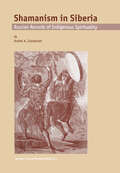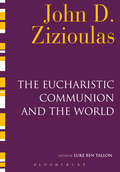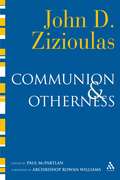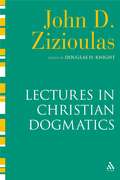- Table View
- List View
The Passionate Triangle
by Rebecca ZorachTriangles abounded in the intellectual culture of early modern Europe—the Christian Trinity was often mapped as a triangle, for instance, and perspective, a characteristic artistic technique, is based on a triangular theory of vision. Renaissance artists, for their part, often used shapes and lines to arrange figures into a triangle on the surface of a painting—a practice modern scholars call triangular composition. But is there secret meaning in the triangular arrangements artists used, or just a pleasing symmetry? What do triangles really tell us about the European Renaissance and its most beguiling works of art? In this book, Rebecca Zorach takes us on a lively hunt for the triangle’s embedded significance. From the leisure pursuits of Egyptian priests to Jacopo Tintoretto’s love triangles, Zorach explores how the visual and mathematical properties of triangles allowed them to express new ideas and to inspire surprisingly intense passions. Examining prints and paintings as well as literary, scientific, and philosophical texts, The Passionate Triangle opens up an array of new ideas, presenting unexpected stories of the irrational, passionate, melancholic, and often erotic potential of mathematical thinking before the Scientific Revolution.
The Passionate Triangle
by Rebecca ZorachTriangles abounded in the intellectual culture of early modern Europe—the Christian Trinity was often mapped as a triangle, for instance, and perspective, a characteristic artistic technique, is based on a triangular theory of vision. Renaissance artists, for their part, often used shapes and lines to arrange figures into a triangle on the surface of a painting—a practice modern scholars call triangular composition. But is there secret meaning in the triangular arrangements artists used, or just a pleasing symmetry? What do triangles really tell us about the European Renaissance and its most beguiling works of art? In this book, Rebecca Zorach takes us on a lively hunt for the triangle’s embedded significance. From the leisure pursuits of Egyptian priests to Jacopo Tintoretto’s love triangles, Zorach explores how the visual and mathematical properties of triangles allowed them to express new ideas and to inspire surprisingly intense passions. Examining prints and paintings as well as literary, scientific, and philosophical texts, The Passionate Triangle opens up an array of new ideas, presenting unexpected stories of the irrational, passionate, melancholic, and often erotic potential of mathematical thinking before the Scientific Revolution.
The Passionate Triangle
by Rebecca ZorachTriangles abounded in the intellectual culture of early modern Europe—the Christian Trinity was often mapped as a triangle, for instance, and perspective, a characteristic artistic technique, is based on a triangular theory of vision. Renaissance artists, for their part, often used shapes and lines to arrange figures into a triangle on the surface of a painting—a practice modern scholars call triangular composition. But is there secret meaning in the triangular arrangements artists used, or just a pleasing symmetry? What do triangles really tell us about the European Renaissance and its most beguiling works of art? In this book, Rebecca Zorach takes us on a lively hunt for the triangle’s embedded significance. From the leisure pursuits of Egyptian priests to Jacopo Tintoretto’s love triangles, Zorach explores how the visual and mathematical properties of triangles allowed them to express new ideas and to inspire surprisingly intense passions. Examining prints and paintings as well as literary, scientific, and philosophical texts, The Passionate Triangle opens up an array of new ideas, presenting unexpected stories of the irrational, passionate, melancholic, and often erotic potential of mathematical thinking before the Scientific Revolution.
Challenging Orthodoxies: Essays Presented to Hilda L. Smith
by Melinda S. ZookOffering a broad and eclectic approach to the experience and activities of early modern women, Challenging Orthodoxies presents new research from a group of leading voices in their respective fields. Each essay confronts some received wisdom, ’truth’ or orthodoxy in social and cultural, scientific and intellectual, and political and legal traditions, to demonstrate how women from a range of social classes could challenge the conventional thinking of their time as well as the ways in which they have been traditionally portrayed by scholars. Subjects include women's relationship to guns and gunpowder, the law and legal discourse, religion, public finances, and the new science in early modern Europe, as well as women and indentured servitude in the New World. A testament to the pioneering work of Hilda L. Smith, this collection makes a valuable contribution to scholarship in women’s studies, political science, history, religion and literature.
Challenging Orthodoxies: Essays Presented to Hilda L. Smith
by Melinda S. ZookOffering a broad and eclectic approach to the experience and activities of early modern women, Challenging Orthodoxies presents new research from a group of leading voices in their respective fields. Each essay confronts some received wisdom, ’truth’ or orthodoxy in social and cultural, scientific and intellectual, and political and legal traditions, to demonstrate how women from a range of social classes could challenge the conventional thinking of their time as well as the ways in which they have been traditionally portrayed by scholars. Subjects include women's relationship to guns and gunpowder, the law and legal discourse, religion, public finances, and the new science in early modern Europe, as well as women and indentured servitude in the New World. A testament to the pioneering work of Hilda L. Smith, this collection makes a valuable contribution to scholarship in women’s studies, political science, history, religion and literature.
Protestantism, Politics, and Women in Britain, 1660-1714 (Early Modern History: Society and Culture)
by Melinda ZookThis compelling new study examines the intersection between women, religion and politics in the late seventeenth and early eighteenth century in Britain. It demonstrates that what inspired Dissenting and Anglican women to political action was their concern for the survival of the Protestant religion both at home and abroad.
Great God A'Mighty! The Dixie Hummingbirds: Celebrating the Rise of Soul Gospel Music
by Jerry ZoltenFrom the Jim Crow world of 1920s Greenville, South Carolina, to Greenwich Village's Café Society in the '40s, to their 1974 Grammy-winning collaboration on "Loves Me Like a Rock," the Dixie Hummingbirds have been one of gospel's most durable and inspiring groups. Now, Jerry Zolten tells the Hummingbirds' fascinating story and with it the story of a changing music industry and a changing nation. When James Davis and his high-school friends starting singing together in a rural South Carolina church they could not have foreseen the road that was about to unfold before them. They began a ten-year jaunt of "wildcatting," traveling from town to town, working local radio stations, schools, and churches, struggling to make a name for themselves. By 1939 the a cappella singers were recording their four-part harmony spirituals on the prestigious Decca label. By 1942 they had moved north to Philadelphia and then New York where, backed by Lester Young's band, they regularly brought the house down at the city's first integrated nightclub, Café Society. From there the group rode a wave of popularity that would propel them to nation-wide tours, major record contracts, collaborations with Stevie Wonder and Paul Simon, and a career still vibrant today as they approach their seventy-fifth anniversary. Drawing generously on interviews with Hank Ballard, Otis Williams, and other artists who worked with the Hummingbirds, as well as with members James Davis, Ira Tucker, Howard Carroll, and many others, The Dixie Hummingbirds brings vividly to life the growth of a gospel group and of gospel music itself.
Great God A'Mighty! The Dixie Hummingbirds: Celebrating the Rise of Soul Gospel Music
by Jerry ZoltenThe venerable Dixie Hummingbirds stand at the top of the black gospel music pantheon as artists who not only significantly shaped that genre but, in the process, also profoundly influenced emerging American pop music genres from Rhythm & Blues and Doo-Wop to Rock 'n' Roll, Soul, and Hip-Hop. Great God A'Mighty! The Dixie Hummingbirds shows how, in a career spanning more than nine decades, they pointed the way from pure a cappella harmony to guitar-driven soul to pop-stardom crossover, collaborating with artists like Stevie Wonder and Paul Simon along the way. Drawing on interviews with founding and quintessential members as well as many of the pop luminaries influenced by the Hummingbirds, author Jerry Zolten tells their story from rising up and out of the segregated South in the twenties and thirties to success on Philadelphia radio and the New York City stage in the forties to grueling tours in the fifties and over the long haul a brilliant recording career that carried well over into the 21st century. The story of the Dixie Hummingbirds is a tale of determined young men who navigated the troubled waters of racial division and the cutthroat business of music on the strength of raw talent, vision, character, and perseverance, and made an indelible name for themselves in American cultural history. This heavily edited 2nd edition features brand new photographs, expanded historical context, and a full new chapter on the Hummigbirds' trajectory up to the 21st century.
Great God A'Mighty! The Dixie Hummingbirds: Celebrating the Rise of Soul Gospel Music
by Jerry ZoltenThe venerable Dixie Hummingbirds stand at the top of the black gospel music pantheon as artists who not only significantly shaped that genre but, in the process, also profoundly influenced emerging American pop music genres from Rhythm & Blues and Doo-Wop to Rock 'n' Roll, Soul, and Hip-Hop. Great God A'Mighty! The Dixie Hummingbirds shows how, in a career spanning more than nine decades, they pointed the way from pure a cappella harmony to guitar-driven soul to pop-stardom crossover, collaborating with artists like Stevie Wonder and Paul Simon along the way. Drawing on interviews with founding and quintessential members as well as many of the pop luminaries influenced by the Hummingbirds, author Jerry Zolten tells their story from rising up and out of the segregated South in the twenties and thirties to success on Philadelphia radio and the New York City stage in the forties to grueling tours in the fifties and over the long haul a brilliant recording career that carried well over into the 21st century. The story of the Dixie Hummingbirds is a tale of determined young men who navigated the troubled waters of racial division and the cutthroat business of music on the strength of raw talent, vision, character, and perseverance, and made an indelible name for themselves in American cultural history. This heavily edited 2nd edition features brand new photographs, expanded historical context, and a full new chapter on the Hummigbirds' trajectory up to the 21st century.
Ethics for the Coming Storm: Climate Change and Jewish Thought
by Laurie ZolothHow can we come to understand our existence on this earth, surrounded by air and light and water, while living in a place we deliberately and carelessly abuse, where resources are becoming scarce, and where the well-being and basic health of our neighbors is threatened? In Ethics for the Coming Storm, Laurie Zoloth argues that our debates about environmental issues have largely been driven by the language of economics and political power, and have become both deeply divisive and symbolic, turning our differing truth claims and moral appeals into signs of identity. This discourse has utterly failed to change the human behavior or political and economic structures necessary to face global warming head on. So Zoloth turns to another language, found in the texts and traditions of Jewish thought--the language of Scripture, the Talmud, and philosophy of Judaism--which, she contends, offers a different kind of argument for such a change. In fact, Zoloth claims, the traditions, histories, and texts of Jewish thought address precisely the sort of existential crisis that we now face, and thus deepen and enrich our public discourse about what to do, and who to be. This book uses a careful attention to rabbinic and philosophical sources in Jewish thought to provide a novel framework through which we can reassess the choices we make that affect our climate, our environment, and our social structures.
Ethics for the Coming Storm: Climate Change and Jewish Thought
by Laurie ZolothHow can we come to understand our existence on this earth, surrounded by air and light and water, while living in a place we deliberately and carelessly abuse, where resources are becoming scarce, and where the well-being and basic health of our neighbors is threatened? In Ethics for the Coming Storm, Laurie Zoloth argues that our debates about environmental issues have largely been driven by the language of economics and political power, and have become both deeply divisive and symbolic, turning our differing truth claims and moral appeals into signs of identity. This discourse has utterly failed to change the human behavior or political and economic structures necessary to face global warming head on. So Zoloth turns to another language, found in the texts and traditions of Jewish thought--the language of Scripture, the Talmud, and philosophy of Judaism--which, she contends, offers a different kind of argument for such a change. In fact, Zoloth claims, the traditions, histories, and texts of Jewish thought address precisely the sort of existential crisis that we now face, and thus deepen and enrich our public discourse about what to do, and who to be. This book uses a careful attention to rabbinic and philosophical sources in Jewish thought to provide a novel framework through which we can reassess the choices we make that affect our climate, our environment, and our social structures.
Second Texts and Second Opinions: Essays Towards a Jewish Bioethics
by Laurie ZolothThis book takes as its subject the intensely private discussions that arise when ordinary people confront life and death choices and struggle with decisions in a world of medical and scientific complexity. Laurie Zoloth began her work in bioethics in a large public California hospital system, where she was part of a group tasked with the creation of an ethics committee in every hospital in the system, that would hear hundreds of cases every year, including pediatric cases from the hospital's intensive care, neonatal intensive care, burn, and oncology units. The book explores the dilemmas presented in these cases and reflects on the competing, often incommensurate moral appeals offered by the participants. It then analyzes the cases against and with similar concepts within Jewish thought, using rabbinic texts to make legible the factors at play as one makes ethical judgments. This philosophical position is feminist as it considers and at times advocates for the inclusion of family and community in the rationale of the clinical setting. Intertwined with legal statements in the Talmud are aggadot, or midrashic texts, literary narratives used to argue a point, or to complicate a point, or to deepen the meaning of the communal discourse, adding history, case studies, or fictive tales to the discussion. Zoloth argues that these texts can be usefully applied to problems in bioethics. She develops the case for a textual turn that is fully imagined and enriched by the many possible re-interpretations of narrative: biblical, rabbinic, medieval, modern, and post-modern.
Second Texts and Second Opinions: Essays Towards a Jewish Bioethics
by Laurie ZolothThis book takes as its subject the intensely private discussions that arise when ordinary people confront life and death choices and struggle with decisions in a world of medical and scientific complexity. Laurie Zoloth began her work in bioethics in a large public California hospital system, where she was part of a group tasked with the creation of an ethics committee in every hospital in the system, that would hear hundreds of cases every year, including pediatric cases from the hospital's intensive care, neonatal intensive care, burn, and oncology units. The book explores the dilemmas presented in these cases and reflects on the competing, often incommensurate moral appeals offered by the participants. It then analyzes the cases against and with similar concepts within Jewish thought, using rabbinic texts to make legible the factors at play as one makes ethical judgments. This philosophical position is feminist as it considers and at times advocates for the inclusion of family and community in the rationale of the clinical setting. Intertwined with legal statements in the Talmud are aggadot, or midrashic texts, literary narratives used to argue a point, or to complicate a point, or to deepen the meaning of the communal discourse, adding history, case studies, or fictive tales to the discussion. Zoloth argues that these texts can be usefully applied to problems in bioethics. She develops the case for a textual turn that is fully imagined and enriched by the many possible re-interpretations of narrative: biblical, rabbinic, medieval, modern, and post-modern.
Engineering: Women and Leadership (Synthesis Lectures on Engineers, Technology, & Society)
by Corri Zoli Shobha Bhatia Valerie Davidson Kelly RuschIn this book we explore a sea change occurring in leadership for academic women in the sciences and engineering. Our approach is a two-pronged one: On the one hand, we outline the nature of the changes and their sources, both in various literatures and from program research results. On the other hand, we specify and provide detail about the persistent problems and obstacles that remain as barriers to women’s full participation in academic science and engineering, their career advancement and success, and, most important, their role as leaders in making change. At the heart of this book is our goal to give some shape to the research, practice, and programs developed by women academic leaders making institutional change in the sciences and engineering. Table of Contents: Women in a New Era of Academic Leadership / Background: Academic Leadership for Women in Science and Engineering / Gender and Leadership: Theories and Applications / Women in Engineering Leadership Institute: Critical Issues for Women Academic Engineers as Leaders / From Success Stories to Success Strategies: Leadership for Promoting Diversity in Academic Science and Engineering / Conclusion
Rabbinic Creativity in the Modern Middle East (The Robert and Arlene Kogod Library of Judaic Studies)
by Zvi ZoharRabbinic Creativity in the Modern Middle East provides a window for readers of English around the world into hitherto almost inaccessible halakhic and ideational writings expressing major aspects of the cultural intellectual creativity of Sephardic-Oriental rabbis in modern times. The text has three sections: Iraq, Syria, and Egypt, and each section discusses a range of original sources that reflect and represent the creativity of major rabbinic figures in these countries. The contents of the writings of these Sephardic rabbis challenge many commonly held views regarding Judaism's responses to modern challenges. By bringing an additional, non-Western voice into the intellectual arena, this book enriches the field of contemporary discussions regarding the present and future of Judaism. In addition, it focuses attention on the fact that not only was Judaism a Middle Eastern phenomenon for most of its existence but that also in recent centuries important and interesting aspects of Judaism developed in the Middle East. Both Jews and non-Jews will be enriched and challenged by this non-Eurocentric view of modern Judaic creativity.
Rabbinic Creativity in the Modern Middle East (The Robert and Arlene Kogod Library of Judaic Studies)
by Zvi ZoharRabbinic Creativity in the Modern Middle East provides a window for readers of English around the world into hitherto almost inaccessible halakhic and ideational writings expressing major aspects of the cultural intellectual creativity of Sephardic-Oriental rabbis in modern times. The text has three sections: Iraq, Syria, and Egypt, and each section discusses a range of original sources that reflect and represent the creativity of major rabbinic figures in these countries. The contents of the writings of these Sephardic rabbis challenge many commonly held views regarding Judaism's responses to modern challenges. By bringing an additional, non-Western voice into the intellectual arena, this book enriches the field of contemporary discussions regarding the present and future of Judaism. In addition, it focuses attention on the fact that not only was Judaism a Middle Eastern phenomenon for most of its existence but that also in recent centuries important and interesting aspects of Judaism developed in the Middle East. Both Jews and non-Jews will be enriched and challenged by this non-Eurocentric view of modern Judaic creativity.
The Marshal's Mission: The Nanny's Temporary Triplets Her Cherokee Groom An Unlikely Mother The Marshal's Mission (Mills And Boon Love Inspired Historical Ser.)
by Anna ZoggLawman with a Secret
Pull It Off: Removing Your Fears and Putting On Confidence
by Julianna ZobristDo you ever feel stuck because of other's expectations of you? Learn to embrace your authentic self and let go of fear. Only then can you step out in bravery, confidence, and brilliance."I could never pull that off!" How many times have we heard that? How many times have we felt that? Well, if artist and musician Julianna Zobrist had a dollar for every time she heard that, she'd be worth her weight in gold. Notorious for her daring fashion and bold creative perspective, Julianna digs deep into her own life to expose why we feel we can't "pull it off." Whether it's fashion, creative expression, parenting, marriage, or daring to go 100 percent at a career, the greatest negative force you will fight against is yourself. In Pull it Off, Julianna reveals how we can be transparent and vulnerable and yet secure and confident enough to walk through life facing our fears.Pull it Off is broken into three parts that address the issues of authority, identity, and security, to reveal the root issue of where our fears stem from. Julianna walks readers through how to maximize our true identities and lean into our unique gifts due to a grounded belief in our acceptance of others, our acceptance by God, and ultimately, the acceptance of ourselves.When we are secure, we believe we are worthwhile and can, indeed, pull it off!
The Beauty of the Primitive: Shamanism and Western Imagination
by Andrei A. ZnamenskiFor the past forty years shamanism has drawn increasing attention among the general public and academics. There is an enormous literature on shamanism, but no one has tried to understand why and how Western intellectual and popular culture became so fascinated with the topic. Behind fictional and non-fictional works on shamanism, Andrei A. Znamenski uncovers an exciting story that mirrors changing Western attitudes toward the primitive. The Beauty of the Primitive explores how shamanism, an obscure word introduced by the eighteenth-century German explorers of Siberia, entered Western humanities and social sciences, and has now become a powerful idiom used by nature and pagan communities to situate their spiritual quests and anti-modernity sentiments. The major characters of The Beauty of the Primitive are past and present Western scholars, writers, explorers, and spiritual seekers with a variety of views on shamanism. Moving from Enlightenment and Romantic writers and Russian exile ethnographers to the anthropology of Franz Boas to Mircea Eliade and Carlos Castaneda, Znamenski details how the shamanism idiom was gradually transplanted from Siberia to the Native American scene and beyond. He also looks into the circumstances that prompted scholars and writers at first to marginalize shamanism as a mental disorder and then to recast it as high spiritual wisdom in the 1960s and the 1970s. Linking the growing interest in shamanism to the rise of anti-modernism in Western culture and intellectual life, Znamenski examines the role that anthropology, psychology, environmentalism, and Native Americana have played in the emergence of neo-shamanism. He discusses the sources that inspire Western neo-shamans and seeks to explain why lately many of these spiritual seekers have increasingly moved away from non-Western tradition to European folklore. A work of intellectual discovery, The Beauty of the Primitive shows how scholars, writers, and spiritual seekers shape their writings and experiences to suit contemporary cultural, ideological, and spiritual needs. With its interdisciplinary approach and engaging style, it promises to be the definitive account of this neglected strand of intellectual history.
The Beauty of the Primitive: Shamanism and Western Imagination
by Andrei A. ZnamenskiFor the past forty years shamanism has drawn increasing attention among the general public and academics. There is an enormous literature on shamanism, but no one has tried to understand why and how Western intellectual and popular culture became so fascinated with the topic. Behind fictional and non-fictional works on shamanism, Andrei A. Znamenski uncovers an exciting story that mirrors changing Western attitudes toward the primitive. The Beauty of the Primitive explores how shamanism, an obscure word introduced by the eighteenth-century German explorers of Siberia, entered Western humanities and social sciences, and has now become a powerful idiom used by nature and pagan communities to situate their spiritual quests and anti-modernity sentiments. The major characters of The Beauty of the Primitive are past and present Western scholars, writers, explorers, and spiritual seekers with a variety of views on shamanism. Moving from Enlightenment and Romantic writers and Russian exile ethnographers to the anthropology of Franz Boas to Mircea Eliade and Carlos Castaneda, Znamenski details how the shamanism idiom was gradually transplanted from Siberia to the Native American scene and beyond. He also looks into the circumstances that prompted scholars and writers at first to marginalize shamanism as a mental disorder and then to recast it as high spiritual wisdom in the 1960s and the 1970s. Linking the growing interest in shamanism to the rise of anti-modernism in Western culture and intellectual life, Znamenski examines the role that anthropology, psychology, environmentalism, and Native Americana have played in the emergence of neo-shamanism. He discusses the sources that inspire Western neo-shamans and seeks to explain why lately many of these spiritual seekers have increasingly moved away from non-Western tradition to European folklore. A work of intellectual discovery, The Beauty of the Primitive shows how scholars, writers, and spiritual seekers shape their writings and experiences to suit contemporary cultural, ideological, and spiritual needs. With its interdisciplinary approach and engaging style, it promises to be the definitive account of this neglected strand of intellectual history.
Shamanism in Siberia: Russian Records of Indigenous Spirituality
by A.A. ZnamenskiThis book takes you to the "classical academy of shamanism", Siberian tribal spirituality that gave birth to the expression "shamanism." For the first time, in this volume Znamenski has rendered in readable English more than one hundred books and articles that describe all aspects of Siberian shamanism: ideology, ritual, mythology, spiritual pantheon, and paraphernalia. It will prove valuable to anthropologists, historians of religion, psychologists and practitioners of shamanism.
The Eucharistic Communion and the World
by John D. Zizioulas Luke Ben TallonA collection of writings on the Eucharist by one of the most important theological thinkers of our time.
The Eucharistic Communion and the World
by John D. Zizioulas Luke Ben TallonA collection of writings on the Eucharist by one of the most important theological thinkers of our time.
Communion and Otherness: Further Studies in Personhood and the Church
by John D. Zizioulas Paul McPartlan'Communion and otherness: how can these be reconciled?' In this wide-ranging study, the distinguished Orthodox theologian, Metropolitan John (Zizioulas) of Pergamon, seeks to answer that question. In his celebrated book, Being as Communion (1985), he emphasised the importance of communion for life and for unity. In this important companion volume he now explores the complementary fact that communion is the basis for true otherness and identity. With a constant awareness of the deepest existential questions of today, Metropolitan John probes the Christian tradition and highlights the existential concerns that already underlay the writings of the Greek fathers and the definitions of the early ecumenical councils. In a vigorous and challenging way, he defends the freedom to be other as an intrinsic characteristic of personhood, fulfilled only in communion.After a major opening chapter on the ontology of otherness, written specially for this volume, the theme is systematically developed with reference to the Trinity, Christology, anthropology and ecclesiology. Another new chapter defends the idea that the Father is cause of the Trinity, as taught by the Cappadocian fathers, and replies to criticisms of this view. The final chapter responds to the customary separation of ecclesiology from mysticism and strongly favours a mystical understanding of the body of Christ as a whole. Other papers, previously published but some not easily obtainable, are all revised for their inclusion here.This is a further contribution to dialogue on some of the most vital issues for theology and the Church from one of the leading figures in modern ecumenism.
Lectures in Christian Dogmatics
by John D. Zizioulas Douglas H. Knight Katerina NikolopuluIn this series of lectures on of the most eminent Christian theologians of our time, Metropolitan John Zizioulas, give his account of the fundamental teachings of Christian theology. He presents Christian doctrine as a comprehensive account of the freedom that results from relationship with God. The whole lecture series lays out complex ideas with the utmost simplicity, illustrates the grandeur of Christian teaching, and is a profound exploration of freedom.
